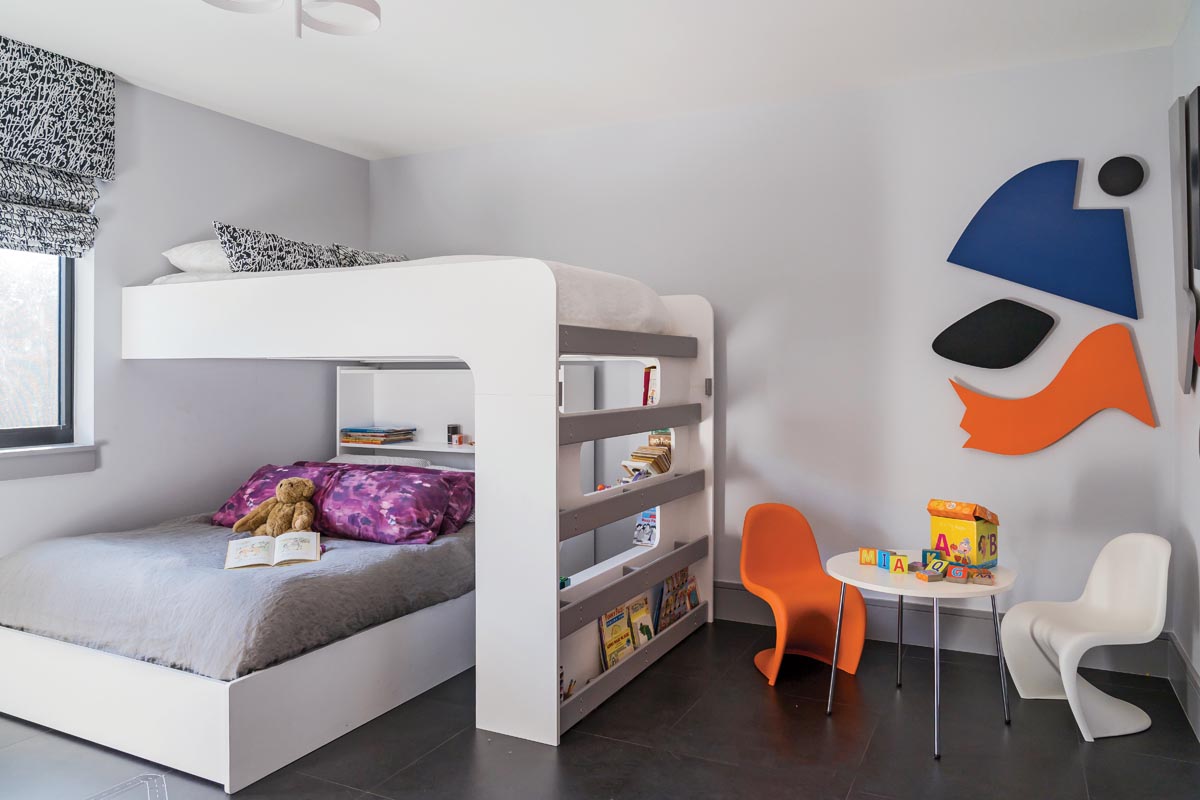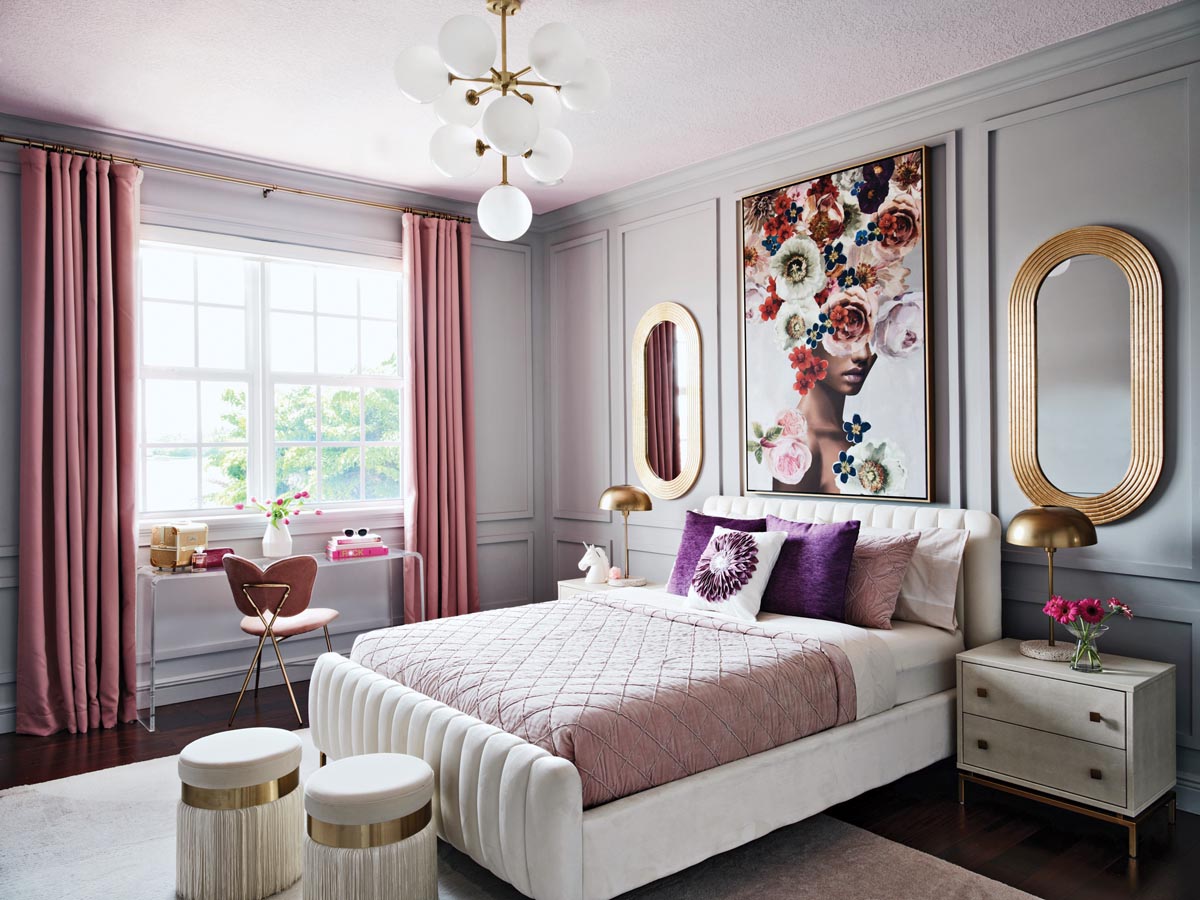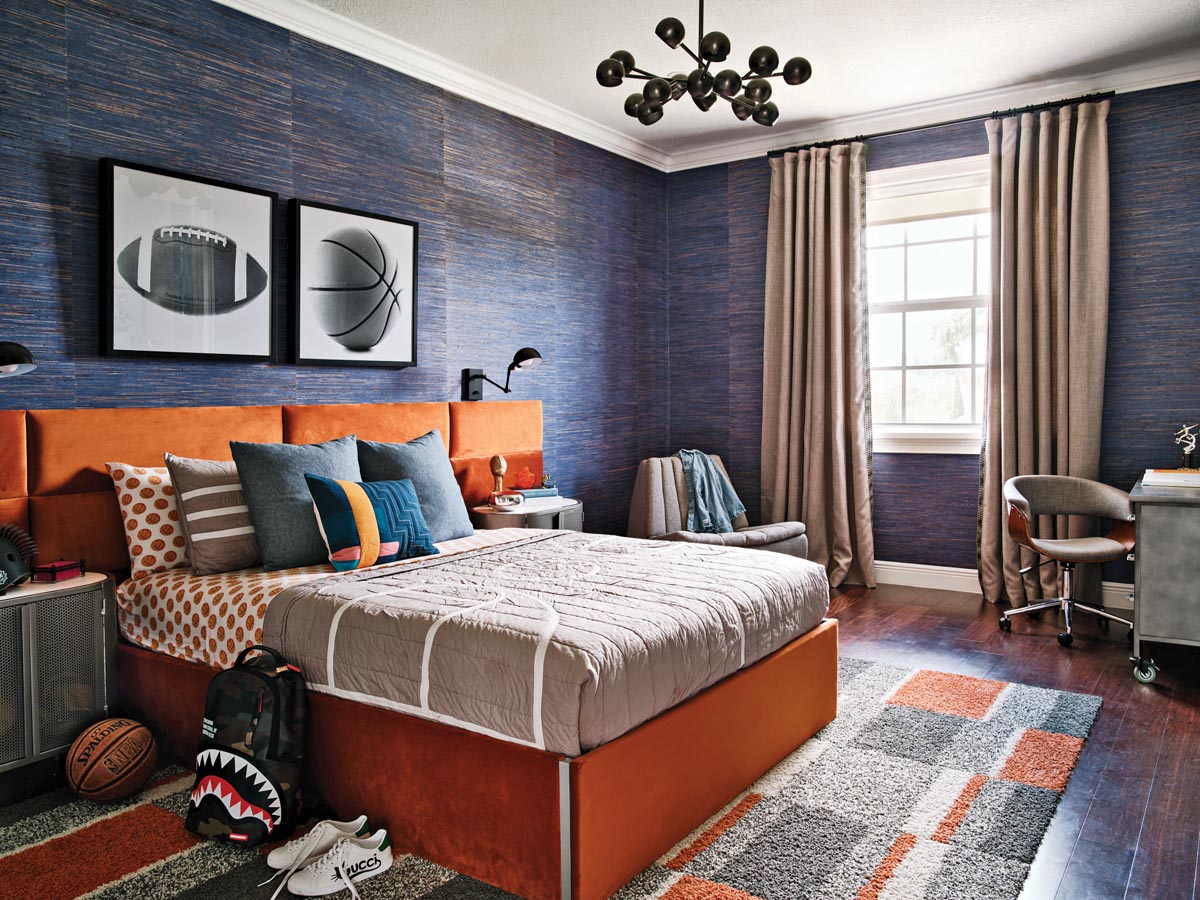Dwayne Bergmann
Think sleep quality. Think color. Think bunk beds!
Q. What are some of your techniques when tackling a kid’s room?
Our first approach is determining the child’s age, the vision for the room, the way the space will function for that kid, and if this room will be a long-term space.
Q. What do you always keep in mind?
Several things. Depending on age, we want to make sure the room accommodates all needs, including space to organize toys and books, and an area to do homework, and we want to make sure the themes selected are conducive to the sleeping environment. It’s also important to consider a room that can “grow” and be easily adapted as the kid ages.
Q. How do you approach palette?
Color is important in the development of a child’s cognitive skills and can affect mood, therefore it’s crucial for us to understand how the child reacts to different shades and how we can incorporate color to create an environment tailored to them.
Q. Do you often involve the kid in the decision process?
We like to interview the child to assess needs, interests, and determine what they’d like to see in the room. Some kids even provide their own mood boards.
Q. Do you have a go-to feature in these projects? Is there something that just works for you time and again?
Bunk beds. We specialize in them.
Q. Where do your ideas for these rooms come from?
Instagram and Pinterest are great for inspiration, [but it’s really the kids who] imagine these grandiose, adventurous spaces with marvelous themes. We take those ideas and provide a different interpretation that works for the space. No request is too outrageous.
Nicole White
Let personality do all the talking
Q. Do you tackle kids’ rooms very often in your firm?
Not enough. We do about two to three such spaces a year, but I would love to do more.
Q. What’s your approach?
There are no limits to our imagination and that’s why kids’ rooms are our favorite type of projects, They force us to remember the joy and playfulness of life.
Q. But I’m sure there are certain things you have to keep in mind?
Yes. If the room is large enough, we definitely include a homework space or a reading area. And we also try to design a space they’ll grow into and love for many years to come. The thought process is always: “What do they love? What do we need to incorporate to make them spend time here?”
Q. Do you involve the kids in the design decision process?
Ah, that’s like opening a can of worms. We definitely encourage their input and pay attention to what they love, but we also remind them that Mom and Dad are the ones paying and that there’s a budget.
Q. What have been some of your more outrageous requests?
There was this boy who wanted his bed designed like a wild car. And while I would have loved to have done that as a designer, Mom and Dad said no because he would have hated it in a few years.
Q. Do you have a go-to feature you rely on when it comes to these projects?
Wallpaper, murals, and interesting millwork details are some of the things we like to incorporate.
Q. So, what are kids and teenagers telling you that they want these days?
They just want spaces that are reflective of their personalities where they can be themselves and dream their wildest dreams.
Q. Where do your ideas for these rooms come from? All over, including just hanging out with my 11-year-old son. We talk about art, sports, and games, and we watch a lot of cartoons. All that frees me up creatively.
Story Credits:
Text by Christopher Day




















Facebook Comments